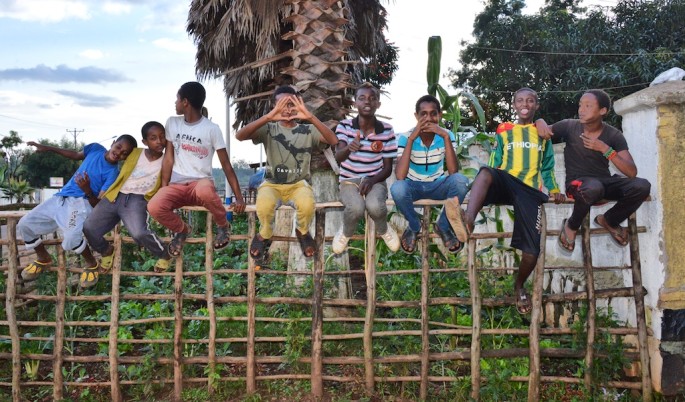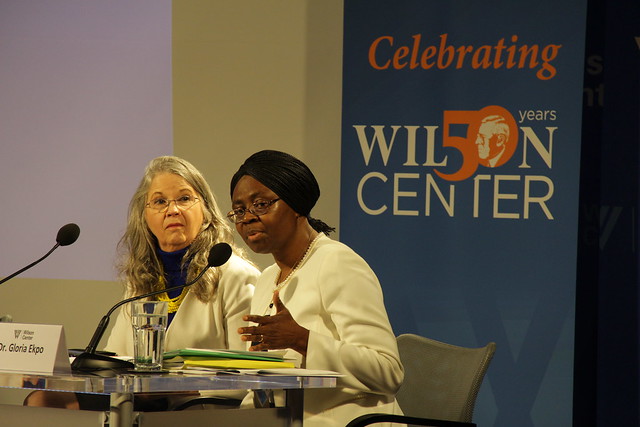-
Where Are All The Men? Faith-Based Efforts to Engage Men and Boys in HIV Prevention Services
May 15, 2018 By Yuval Cohen
In sub-Saharan Africa, “more than half of the men under the age of 35 do not know their [HIV] status and are not on treatment,” said Dr. Sean Cavanaugh of the Office of the Global AIDS Coordinator at a recent Wilson Center event on engaging the faith community in reaching young men and boys with HIV prevention services. Consequently, men often don’t seek HIV services promptly, decreasing their rates of antiretroviral therapy and viral suppression, and increasing HIV mortality rates.
“The faith community… [has] brought a commitment to ethics, to values, and to the achievement of durable clinical outcomes,” said Jared Hoffman of World Vision U.S. “The faith-based community needs to be mobilized for this new challenge.”
Stopping the Cycle: The Unique Role of the Faith-Based Community
Across the world, young women aged 15 to 24 years account for 20 percent of new HIV infections in adults, despite being just 11 percent of the world’s adult population. In sub-Saharan Africa, women account for more than half of all new adult infections, with young women representing 25 percent of new adult infections, outpacing their 17 percent share of the population.
In contrast, young men account for 14 percent of new adult HIV infections globally and 12 percent in sub-Saharan Africa. However, adult men ages 20 to 35 are a significant factor in the cycle of HIV transmission from older men to younger women. The typically younger female partners of these adult men transmit HIV to their male peers, ages 15-30, who then again transmit HIV to younger women, thus continuing the cycle. To break the pattern, we need to identify men and boys ages 15-24 with HIV through testing, and help those patients get care before they transmit the disease.
The faith community is uniquely positioned to take on the challenge of testing men and bringing them into care. Globally, 84 percent of the world is religiously affiliated. “There is no other institution that has that kind of reach,” said Dr. Cavanaugh.
In the United States, “on any given Sunday, African Americans are in church—about 50 percent [of them],” said Jannette Berkley-Patton from the University of Missouri-Kansas City, making churches ideal places for reaching men and bringing them into care.
Faith institutions can rally behind this cause because “HIV testing is not only a public health issue, it’s a social justice issue,” said Berkley-Patton, “and everyone has a right to know their HIV status.”
Why Are Young Men and Boys at Risk?
The numerous challenges to reaching young men and boys include cultural and behavioral norms, stigmas surrounding sex and HIV, and discomfort in working with female health providers.
“Care-seeking is often counter-normative for men; clinics are often seen as female spaces,” said Dr. Cavanaugh, and gender roles often place men as “care providers,” rather than “care seekers.”
To reach young men and boys with HIV services, we must understand their context, said Julie Pulerwitz of the Population Council. In studies from Uganda, South Africa, and Swaziland, many men reported traumatic childhood experiences that affected their intimate relationships later in life. In South Africa, almost 80 percent of men report that they were beaten at home before the age of 18.
“Childhood experiences of violence for these men were associated with having multiple sexual partners in the last year, as well as inconsistent condom use,” said Pulerwitz. Moreover, “men’s intimate relationships, as characterized by them, are often filled with a lot of conflict, a lot of miscommunication, a lot of mistrust,” she said.
Faith Leaders Can Open Doors to Dialogue
Faith institutions “are the ideal platform to reach a lot of the people that we are still trying to reach,” said Dr. Cavanaugh. Between 75-93 percent of people in countries across sub-Saharan Africa characterize religion as very important in their lives.
“Faith-based institutions have a lot of networks,” said Dr. Gloria Ekpo from World Vision U.S., such as schools and health facilities. Some of the highest rates of HIV testing uptake among men occur in outreach ministries, said Berkley-Patton, such as food pantries, social service activities, and recovery programs.
Taking It to the Pews (TIPS), a toolkit developed in Kansas City, Missouri, is a faith-based effort to prevent HIV prevention that involves Christian churches throughout the city. “They wanted tools that fit naturally with what happens in churches,” said Berkley-Patton, including sermon guides, HIV testing testimonials, and HIV stigma videos.
While testing is the goal, “the vehicle is the pastor,” said Berkley-Patton. Part of the TIPS program is ensuring that participating pastors are “preaching on Sunday mornings about the importance of addressing HIV [and] role modeling receipt of an HIV test during the church services.”
“The leaders are key,” said Dr. Ekpo, “if a leader does not open the doors of his or her congregation to you, you cannot do anything.”
While the faith-based community has come a long way in dialogue around HIV, these conversations are not necessarily “open discussion about sex, and that’s dangerous,” said Deborah Dortzbach of World Relief. Faith leaders can help facilitate those conversations to de-stigmatize HIV and promote awareness of services.
We can truly go somewhere, said Dortzbach, if we open this dialogue among couples, between pastors and their congregations, and between parents and their children.
Event Resources:
Sources: Pew-Templeton Global Religious Futures Project/Pew Research Center, Population Council, UNAIDS, U.S. President’s Emergency Plan for AIDS Relief (PEPFAR)
Photo Credit: Street Boys in Jimma, Ethiopia, August 2014, courtesy of Rod Waddington.
Topics: Dot-Mom, featured, From the Wilson Center, gender, global health, HIV/AIDS, media, religion, video, youth
 A Publication of the Stimson Center.
A Publication of the Stimson Center.




